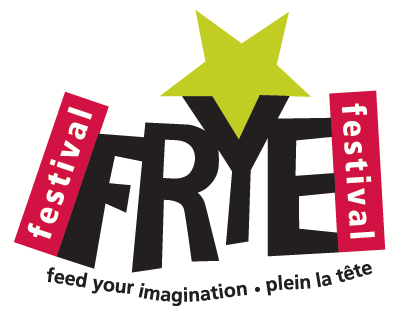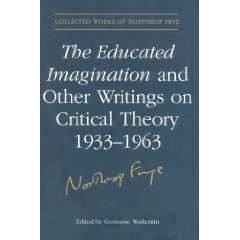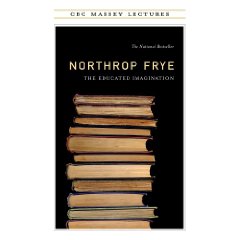
From the Frye Literary Festival, Moncton: Germaine Warkintin’s opening remarks at a roundtable discussion on April 22, 2009. We will shortly be archiving material from the Frye Festival in a dedicated area.
A few months ago I was asked by a colleague to lecture at an American university of good repute, and he asked me to send him several different topics to choose from. I produced four, one of which was a paper on Northrop Frye. About a week later he got back to me. “I think we’d like you to talk about the 17thC Jesuit,” he said; “I can’t find anybody here who is interested in Frye.”
That’s an academic response, and it came from young people who are still in grad school, people who were probably about six or eight years old when Frye died in 1991. And it’s contradicted by the excellent sales figures of Frye’s books, from Fearful Symmetry (1947) to The Double Vision (1991). Forty-four years of work, still being attended to by someone out there, as this wonderful festival clearly shows. What’s going on here?
The first thing to note is that the loss or diminution of the repute of a major intellectual figure is almost inevitable in the years after his or her death; we can all think of examples. But this is clearly a diminution in only one area, the academic study of literary theory. It doesn’t seem to be the case with a wider audience. As a matter of fact, Northrop Frye is almost alone among critics in commanding a wider audience in this day of intensely specialized academic critical discourse.
Perhaps my own response to The Educated Imagination offers a clue here: I edited it, with his other early critical writings, for the “Collected Works,” and I asked for the job because I love it as a piece of writing. It operates on me in just the way Jean Wilson just described in her presentation. Frye can be a marvelous writer: coolly compassionate, sometimes slangy, immensely literate of course, and as engaging as a favourite uncle. In life he wasn’t much like an uncle — he was actually rather shy, at least when I knew him, between his early fifties and his death. But his writing created that uncle-like impression.
This is one of the best examples I know of Frye’s own theory about how literature functions: the writer’s imagination creates not a mirror of the external world, but a possible model of experience for the reader to work with — and within. In his writing Frye provided the model of an immensely wise and witty reader of the canonical works of western literature. It’s a model that invites the reader into that imagined world, composed of King Lear, The Divine Comedy, the poetry of Paul Valery and Wallace Stevens, the criticism of Edgar Allan Poe, and of course what for him were the really big books: Blake, Finnegan’s Wake, the Bible.
Continue reading →



